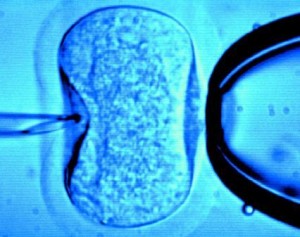There has been an extensive history in the development of In Vitro Fertilisation. This is evident in the scientific discoveries and advances in medical procedures. In addition, the church and society have made scientific contributions to the debate concerning In Vitro Fertilisation techniques. The discovering of human ova and sperm during the 1800’s provided a greater understanding of the nature and purpose of reproduction. These significant developments became the moral concern of the church in 1958 when Pope Pius x11 declared human artificial insemination immoral. The church upheld its moral stance against IVF techniques and Pope John VI outlined this is 1968 in the encyclical human Vitae. Despite the churches stance on the issue, the development of In Vitro Fertilisation techniques continued and resulted in the birth of the first IVF baby, Louise Brown in 1978.
This significant development in reproductive Technology created a great need for the establishment of Louise to determine who can and  cannot gain access to IVF and GIFT. ( gamete Intra – fallopian tube transfer) In vitro Fertilisation is Latin for “in Glass”. In Vitro Fertilisation, which throughout this essay will be represented by IVF, is one type of reproductive technology. The practice of IVF involves the removal of male and female gametes that are fused together outside of the body and the Zygote (fertilised ova) is then implanted into the uterus in the hope that implantation will occur. In order for this to occur the male usual is expected to produce sperm through masturbation, which that itself is considered to violate the unitive and procreative meaning of the conjugal act. IVF was originally used by couples experiencing difficulty in conceiving children due to a blockage in the fallopian tubes. The new reproductive technology allows pregnancy to occur without the process of the conjugal act. This radical split in the dual functions of the conjugal act is what the church sees as wrong. In response to the challenge faced by the Catholic church in regard to IVF, the church has issued three documents stating their objective to the IVF treatment.
cannot gain access to IVF and GIFT. ( gamete Intra – fallopian tube transfer) In vitro Fertilisation is Latin for “in Glass”. In Vitro Fertilisation, which throughout this essay will be represented by IVF, is one type of reproductive technology. The practice of IVF involves the removal of male and female gametes that are fused together outside of the body and the Zygote (fertilised ova) is then implanted into the uterus in the hope that implantation will occur. In order for this to occur the male usual is expected to produce sperm through masturbation, which that itself is considered to violate the unitive and procreative meaning of the conjugal act. IVF was originally used by couples experiencing difficulty in conceiving children due to a blockage in the fallopian tubes. The new reproductive technology allows pregnancy to occur without the process of the conjugal act. This radical split in the dual functions of the conjugal act is what the church sees as wrong. In response to the challenge faced by the Catholic church in regard to IVF, the church has issued three documents stating their objective to the IVF treatment.
The encyclical Humane Vitae emphasised the question that birth and death involve more than just biological facts, raising the question of ‘just because we can, does it mean we ought?” Humane Vitae states clearly that IVF techniques Violate the unitive and procreative meaning of the conjugal act required to have a child. Domun Vitae strongly clarified and reaffirmed the catholic teaching on the issue of reproductive medical research. Domun Vitae brings to light the rights of the child who are the ones who require the most protection. It also expresses the extreme concern for the well being and welfare of excess embryos. Pope John Paul 11 appeals to the worlds scientific authorities to ‘halt the production of human embryos!” One new technology begins to distort the meaning of the conjugal act. Factors that effected the response of the church is the issue that the child becomes a commodity rather than being loved by its genetic parents.
The gospel teaches that those least capable of protection are those most worthy. The understanding and compassion the church is expressed to those unable to have children and feels sympathy for them. In terms of the churches response in relation to the society, despite the stance of the church, these reproductive methods have led to various kinds of civil legislation that govern the procedures. In1995 a new infertility treatment act was passed, bringing the teaching of the church closer to society. The church has also came into sharp conflict with the ethics of the modern western culture.
